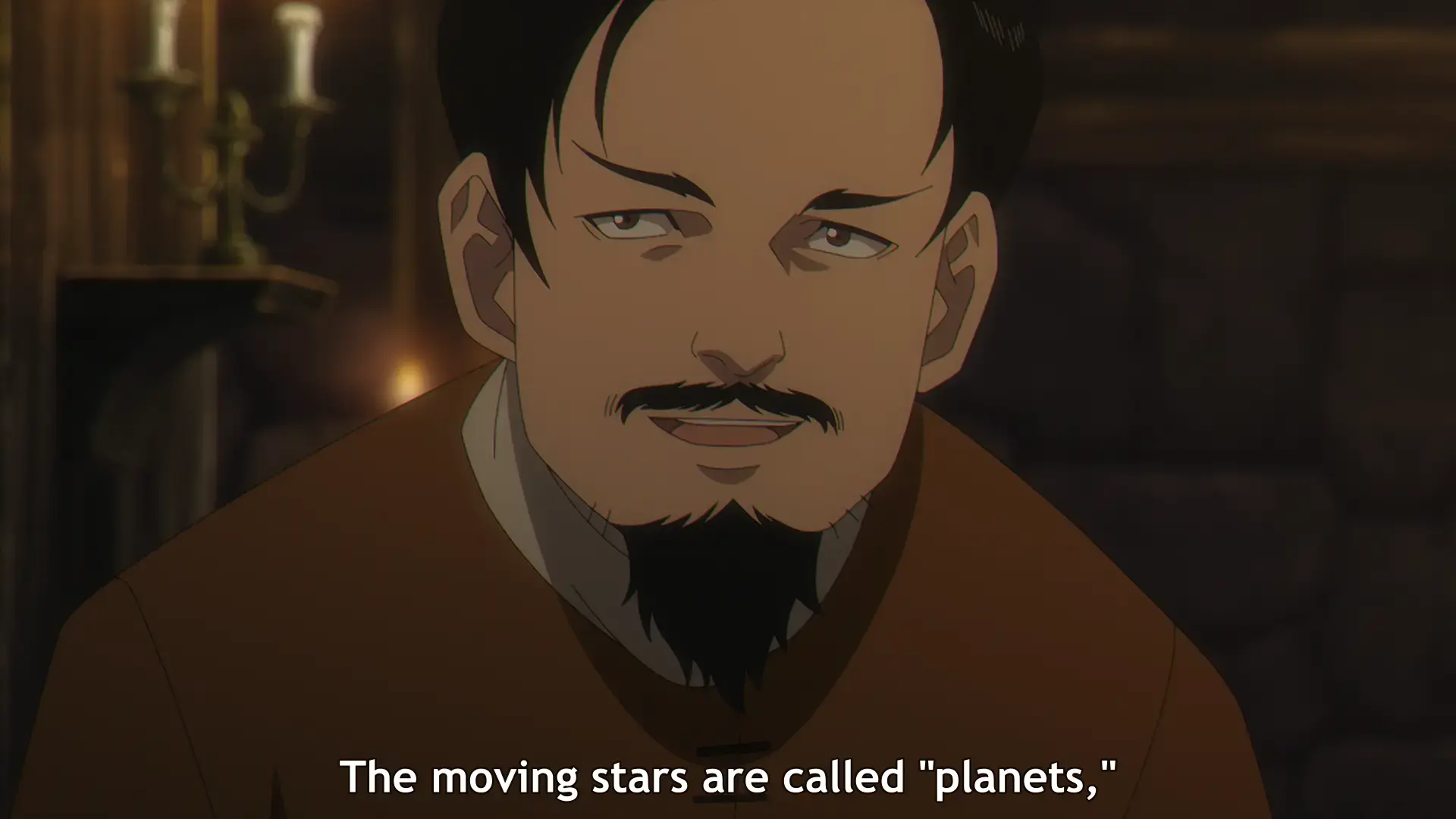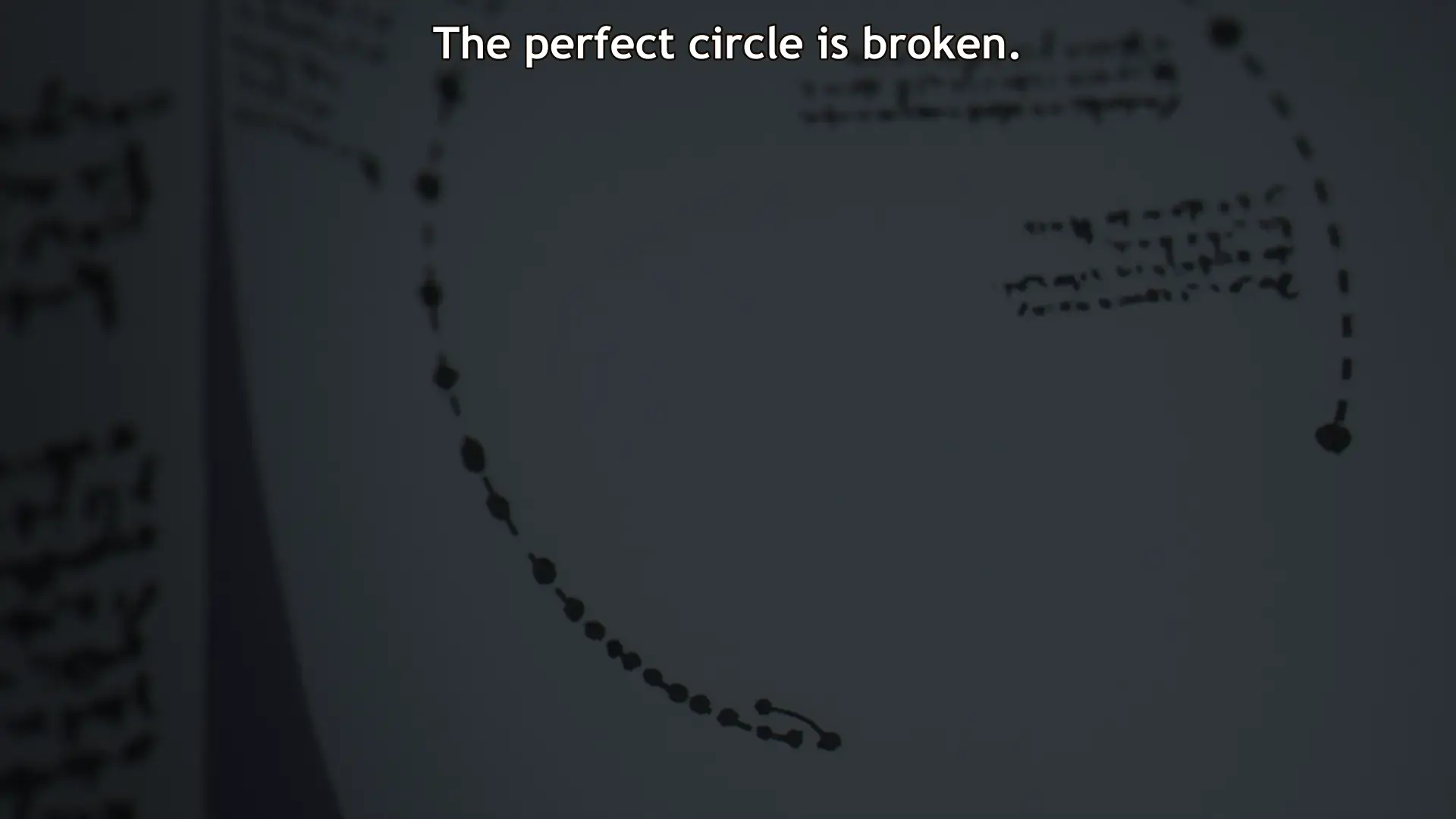Chi.: Chikyuu no Undou ni Tsuite, episode 4

Alternative Names
Chi: About the Movement of the Earth, O ruchach Ziemi, สุริยะปราชญ์ ทฤษฎีสีเลือด
Additional Links
Reminder: Please do not discuss plot points not yet seen or skipped in the show. Failing to follow the rules may result in a ban.
All discussions
| Episode | Link |
|---|---|
| 1 | Link |
| 2 | Link |
| 3 | Link |
| 4 | Link |
This post was created by a bot. Message the mod team for feedback and comments. The original source code can be found on GitHub.
I got so excited when I saw that they changed the OP to match the change in main character after the unfortunate end of Rafal. Our new main character, Oczy, is a bit of a piece of work. He has some serious hangups about how corrupt and gross the Earth is while he is obsessed with heaven and the afterlife. I am curious how he is going to handle his partner’s newfound curiosity with heretical thinking.
Just a quick aside, when Oczy asked about whether anybody died looking satisfied, I was reminded of Rafal in the last episode. So, I kind of expected that the story we were seeing this episode to be happening while Rafal was still alive and that Oczy was going to see Rafal’s death. Alas, that is not how things worked out. Instead, we are left wondering who this heretic on the cart is and how he got Rafal’s necklace (the true main character it seems).
Science time! The main scientific topic this week was the planets and specifically Mars. So, let’s learn together!
- Planets
The term planet actually comes from Ancient Greek. I don’t know Ancient Greek, so I am going to copy/paste this bit from wikipedia:
In ancient times, astronomers noted how certain lights moved across the sky, as opposed to the “fixed stars”, which maintained a constant relative position in the sky. Ancient Greeks called these lights πλάνητες ἀστέρες (planētes asteres) ‘wandering stars’ or simply πλανῆται (planētai) ‘wanderers’ from which today’s word “planet” was derived.
So, now you know where the series Planetes gets its name as well!

In any case, if you have never had the chance to observe the night sky in a relatively dark part of the world (away from civilization), it is truly breathtaking. It is also very easy to pick out a couple planets in the night sky. Specifically Jupiter is usually pretty easy to spot as it is often the brightest object in the sky other than the moon. Venus is actually slightly brighter, but because of its orbit, it is always very close to the sun in our sky. So, you will only see Venus when the sun is either about to rise or has just set while Venus is above the horizon. This has given Venus the nicknames “morning star” and “evening star”.
Another easy planet to pick out is…
- Mars
On a clear night in a dark sky, Mars actually does appear distinctly red, even by eye. This has given Mars an association with fire in many cultures. Mars is actually written in Japanese as 火星 (kasei). When you look at each of these kanji individually, it would translate as “fire star” (actually all the planets end with 星).
Mars has been incredibly significant in the history of astronomy. It is a planet that is observable most of the year, moves relatively quickly, and is bright enough to spot and track easily. It was actually the motions of Mars in the sky that led Ptolemy to develop his geocentric model in the first place. Then, later, it was careful observations of Mars by Tycho Brahe that allowed Johannes Kepler to derive his laws of planetary motion and describe the planetary orbits as ellipses rather than circles.

- Retrograde Motion
In this episode we see Gras become dismayed when he observes Mars slow down and move the opposite direction in the night sky. This phenomenon is called retrograde motion and all the planets in the solar system do this. To help visualize what brings about apparent retrograde motion, wikipedia has a handy, dandy video (sadly not embeddable). To just see what an observer on Earth would see, here is a neat gif showing the track that Mars appears to follow:

If you compare the track in the gif to what Gras has in his observation log, you can see the similarities:

Gras comments that it has been about 2 years since he started observing Mars. Well, each of the planets has a very regular cycle with which they undergo retrograde motion. For Mars, that is 25.6 months and it spends 72 days moving retrograde. So, he must have started observing Mars just after it had last completed a retrograde cycle. It turns out the author did their homework and the timelines work out!


